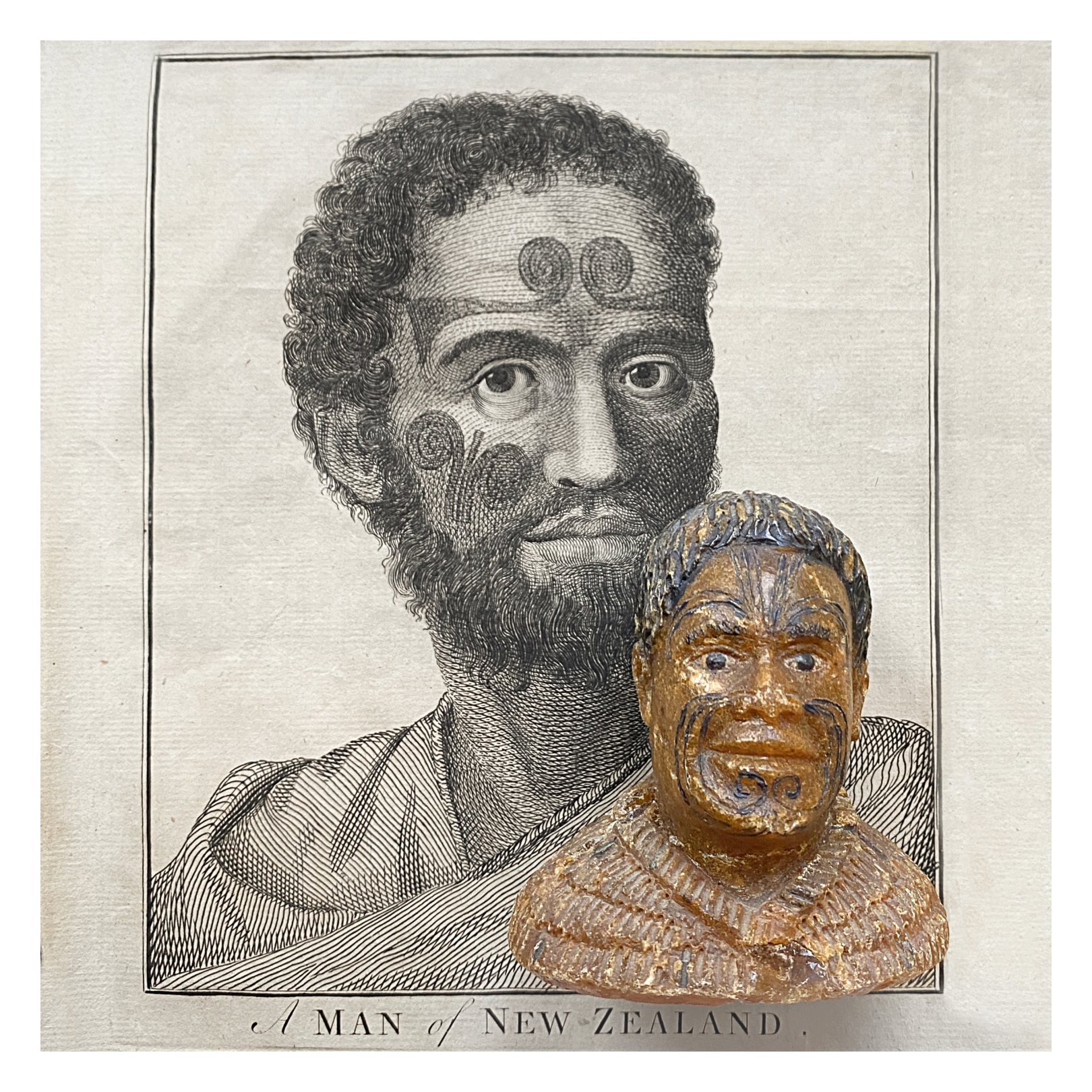Pair of Māori Sculptures
Pair of Māori Sculptures
Pair of 19th century Carved Kuari Gum of Maori with Ta-Moko Tattoos.
9 x 6 x 10.5 cm (woman) / 8 x 6 x 8.5 cm
New Zealand or Maori Aotearoa is the largest Polynesian country in the southwestern Pacific Ocean. It includes two islands - the North(Te Ika-a-Maui) and the South(Te Waipounamu) and encompasses over 700 smaller islands. It was one of the last major landmasses settled by humans. Eastern Polynesians first arrived at this new archipelago as early as 1250, and by 1350, developed a distinct culture now known as Māori.
The first European contact with Nova Zeelandia and the Maori people was by Dutch East India Company(VOC) explorer Abel Tasman in 1642. During that expedition, artist Isaack Gilseman created the first European impression of local Maori. It was not until 127 years after Tasman’s discovery, that the next Europeans visited New Zealand. In 1769, famed British Captain James Cook and crew arrived with the HMS Endeavour. Considered one of the greatest maritime cartographers of the 18th century, he created the first detailed charts defining the entire outline of the main islands of New Zealand.
After successful trading for many years, the British Crown and Maori chiefs signed the Treaty of Waitangi in 1840. This declared British sovereignty over the islands and New Zealand became a colony. However, in the years following the Treaty, conflict continued. The Maori believed it had secured ultimate preservation of their land and customs, while British mass migration and settlement angered local tribes leading to deadly skirmishes throughout the islands.
Polynesian cultures developed unique tattoo patterns as an important part of cultural identity and rites of passage. With no formal written language, they became a way to express individuality, experiences and ancestry(whakapapa). The English word tattoo derives from the Tahitian word tattaow or tatau(to strike), originally heard on Cook’s first travels. Ta moko, the traditional tattoos of the Maori, have been used for centuries to denote one having high social status and spiritual energy or mana. The inking process was done only by sacred(tapu) craftsmen or Tohunga-tā-moko using a bone carving tool(uhi). This tool would chisel and tap the skin applying pigment made from burnt Kauri tree gum and animal fat.
To the Maori, the head is considered a sacred part of the body, with the creation of moko designs and placement an important ritual. Women would receive moko on the chin and lips(moko kauae). While men, especialy of high standing, would receive full facial tattoos in addition to many other parts of the body.
The Kuari(Agathis australis) is a coniferous tree endemic to New Zealand’s North Island. They are second in size to California’s giant sequoias and can live to be 2000 years old. The high demand for timber and farmland in the early 19th century significantly decreased the number of kuari trees through heavy logging and burning.
Timber was not the only export from kauri trees. In response to damage, a tree will release a sap or resin to protect itself. Over time, it would build up at the base becoming buried in forest debris and eventually fossilizing. This fossilized sap became known as kauri gum(kapia). It was acquired by excavating it from old growth forest and swamp land through hard labor done by “gum diggers”(nga Kiri Kapia). By the early 20th century, it became a prized commodity and the largest commercial export, for use in high quality wood varnishes.






